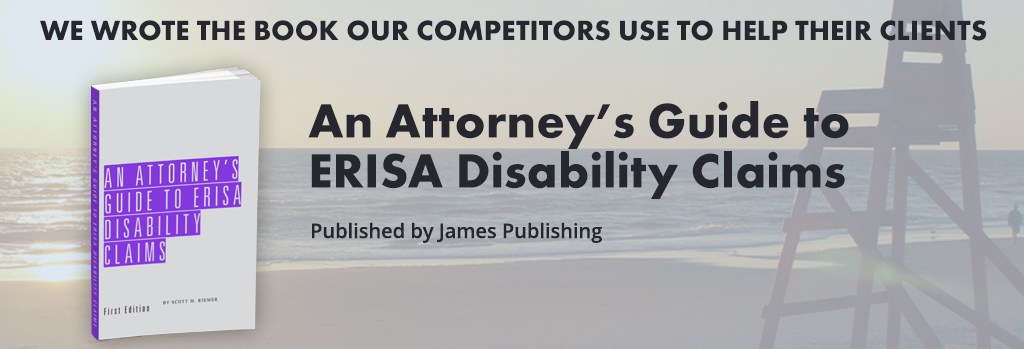
An Attorney’s Guide to ERISA Disability Claims is an essential resource that gives you the detailed knowledge you need to thoroughly prepare ERISA disability claims through both the initial application process and the insurance company’s appeal process.
Disability insurers scrutinize claims for any shred of evidence to support a decision that the insured can still perform her occupation. Sometimes just a line or two in the doctor’s treatment notes or a minute on a surveillance video is enough. In assessing an occupation’s requirements, insurers routinely ignore significant demands, such as travel, long hours, high stress, and quick thinking. This comprehensive guide tells you how to anticipate and respond to these and similar (sometimes outrageous) insurer tactics.
Click here if you would like to purchase the book from James Publishing:
Buy Now
The surest way to resolve your client’s ERISA disability claim favorably without litigation is to prepare your client’s application and appeal as though you expect litigation to be necessary. When insurers know you are ready for court, they are more likely to pay the claim and save litigation for someone else’s client. If you do need to litigate, you will be ready.
Abbreviated Table of Contents
Chapter 1: Strategy
Chapter 2: Applying for Benefits
Chapter 3: Proving Disability
Chapter 4: Appealing a Denial or Discontinuation
Chapter 5: Requesting the Post Appeal Claim File
Chapter 6: Additional Appeals
Chapter 7: Appendix – 13 forms Sample Documents
Book Description
Filled with practical strategies and helpful templates and forms, this comprehensive guide teaches you how to assemble a compelling case that your client meets the policy’s standard of disability. You will learn:
How to guide your client, your client’s doctor, and your client’s employer to avoid traps when completing the claim application forms. §2:00.
How to prove your client is disabled. §3.1.
How insurers cherry pick doctors’ treatment notes and what to do about it. §3.1.1.
What to include in a Residual Functional Capacity Questionnaire. §3.1.3.
What to ask a doctor to include in a narrative report. §3.1.4.
How to prep your client for an insurer interview. §3.1.6.
How to handle a claim when the policy’s occupational standard shifts from “own occupation” to “any occupation.” §3.2.2.
What information to gather for the client’s vocational affidavit. §3.3.1.
What actual demands of your client’s occupation insurers’ will overlook. §3.3.4.
How to get your client’s claim file and what to look for when you get it. §4.1.
How to analyze the denial letter so that you can respond to all of the insurer’s concerns. §4.2.
When to send your client for a functional capacity evaluation and how to overcome an unfavorable one.§4.4.1.
What’s required for valid neuropsychological testing. §4.4.2.
When to get a vocational expert evaluation and what information is in one. §4.4.3.
How to discredit an insurer’s surveillance videotape of your client. §4.7.
15 Arguments you can make to the insurer for reversing its original denial. §4.8.











